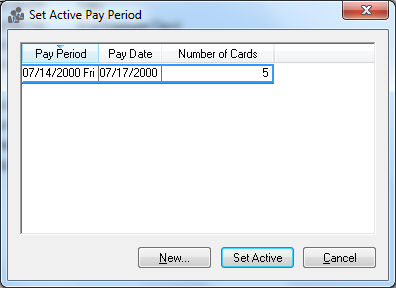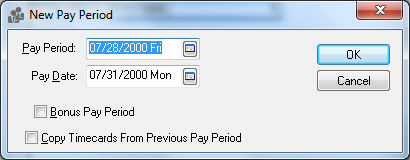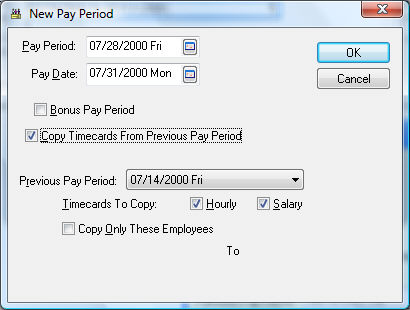- EBMS Knowledge Base
- Labor
- Processing Payroll
-
Client Resources
-
EBMS Main Documentation
- Introduction
- Getting Started
- Getting Started | Initial Installation
- Getting Started | Company Setup
- Quick User Guide | Financial Staff | Accountant
- Quick User Guide | Financial Staff | Accountant | Accountants Journal
- Quick User Guide | Sales Staff
- Quick User Guide | General Staff
- Features
- Reports
- Security
- Server Manager
- Technical
- Technical | Data Import and Export Utility
- Technical | SQL Mirror
- Automotive
- Automotive | Parts Catalog
- Automotive | Pricing
- Automotive | Point of Sale
- Automotive | Product Application
- Automotive | Keystone Interface
- Metal Supply
- Fuel Sales
- Horticulture
- Horticulture | Farm Setup
- Horticulture | Processing Payroll
- Horticulture | Managing the Farm
-
Sales
- Introduction
- Customers
- Customers | Miscellaneous Customers
- Proposals
- Proposals | Processing Proposals
- Proposals | Sets and Templates
- MyProposals
- MyOrders
- Sales Orders
- Invoices
- Materials Lists
- Sales and Use Tax
- Sales and Use Tax | TaxJar
- CRM
- CRM | Auto Send
- Recurring Billing
- Credits
- Customer Payments
- Payment Card Processing
- Payment Card Processing | Gift Cards
- Payment Card Processing | Loyalty Cards
- Payment Card Processing | Verifone Gateway
- Freight and Shipping Tools
- General Ledger Transactions
- Point of Sale
- Point of Sale | Point of Sale Hardware
- Point of Sale | Xpress POS System
- Point of Sale | Advanced Tools
- Signature Capture
- Salesperson Commissions
-
Inventory
- Product Catalog
- Product Catalog | Using Product Codes for No Count Items
- Product Pricing
- Product Pricing | Special Pricing
- Tracking Counts
- Unit of Measure
- Purchasing
- Special Orders and Drop Shipped Items
- Receiving Product
- Barcodes
- MyInventory and Scanner
- Components (BOM) and Accessories
- Components (BOM) and Accessories | Component Formula Tool
- Made-to-Order Kitting
- Configure-to-Order Kitting
- Multiple Inventory Locations
- Multiple Inventory Locations | Creating Locations
- Multiple Inventory Locations | Using Multiple Locations
- Multiple Inventory Locations | Product Catalog Sync
- Multi-Vendor Catalog
- Serialized Items
- Serialized Items | Purchasing or Manufacturing an Item
- Serialized Items | Selling and/or Associating an item with a customer
- Lots
- Product Attributes
- Product Attributes | Selling and Purchasing Items with Attributes
- Product Attributes | Custom Attributes
- Mobile Scanner (Legacy)
-
Labor
- Getting Started
- Workers
- Taxes and Deductions
- Work Codes
- Time and Attendance
- Time and Attendance | Time Track App
- Processing Payroll
- Closing the Payroll Year
- Processing Payroll - Advanced
- Salaried Pay
- Piecework Pay
- Direct Deposit
- 3rd Party Payroll Service
- Subcontract Workers
- Flag Pay
- Prevailing Wages
- MyDispatch
- MyTasks
- MyTime
- MyTime | Communications
- MyTime | Setup
- Tasks
- Tasks | Getting Started
- Tasks | Creating Tasks
- Tasks | Scheduling Tasks
- Tasks | Customizing Task Views
- Tasks | Managing Tasks
-
Financials
- Introduction
- Fiscal Year
- Chart of Accounts
- Budget
- Financial Reporting
- Transactions and Journals
- Transactions and Journals | Journals
- Account Reconciliation
- 1099
- Departments and Profit Centers
- Fund Accounts
- Bank Accounts
- Bank Feed
- Vendors
- Vendors | Miscellaneous Vendors
- Purchase Orders
- Expense Invoices
- Vendor Payments
- AP Transactions
- Landed Cost
- Fixed Assets and Depreciation
- Fixed Assets and Depreciation | Fixed Assets
- Fixed Assets and Depreciation | Fixed Assets | Adding Assets
- Fixed Assets and Depreciation | Processing Depreciation
- Fixed Assets and Depreciation | Disposing Assets
- MyJobs
-
E-commerce
-
Rental
-
Job Costing
-
Manufacturing
Opening New Pay Period
The first thing that is needed to process payroll is to establish Pay Periods. Pay periods are an important part of organizing payroll within EBMS. A pay period consists of both the pay period’s ending date and the pay date. The pay period ending date is the last day of the pay period while the pay date is the day that the paychecks are printed.
EXAMPLE: If the last day of the pay week is on Saturday and the paychecks are printed on the following Wednesday, the ending pay date for each pay period would be Saturday’s date and the pay date would be the following Wednesday’s date.
Unlike the checks within accounts payable where the checks can be processed with any date within the fiscal year, the paychecks must be dated with the pay period’s pay date. A pay period MUST be created before any timecards can be entered.
A pay period should be opened before the first day of the pay period to allow users to clock in using various time collection tools. A pay period can be opened weeks or even months in advanced within the same pay year.
EBMS allows many payroll periods to be opened at the same time. Only one payroll period can be active at one time, however. To choose which one is currently active, and therefore is the default for timecard entry, take the following steps:
-
Go to Labor > Set Pay Period, and the following window will appear:

-
If the desired pay period has already been created, highlight the pay period and click the Set Active button. Otherwise, click the New button to create a new pay period. The following dialog will appear if you click New.

-
Enter a new Pay Period date. This date must be unique. This is the ending date of the pay period. If you wish to run two payrolls within the same week for bonus pay purposes or some other reason, the pay period date must be two different dates within the same week.
-
Enter the Pay Date that the paychecks will be printed. If you print a paycheck or group of paychecks before the pay date, which is possible, the checks will be post dated with this date.
-
Only enable the Bonus Pay Period option for bonus payrolls. Review the Processing Payroll - Advanced > Separate Bonus Pay Periods section for more details on bonus pay periods.
Copying Timecards from Previous Pay Periods
To Copy Timecards from Previous Pay Period click on the check box and the dialog will expand with the following fields:
-
Set the Previous Pay Period from which the timecards are to be copied.
-
Check the Hourly check box to copy all timecards except for salaried employees or select Salary to copy timecards of salaried employees. To copy all the timecards, click both check boxes.
-
To only copy the timecards from a range of employees click the Copy only these Employees check box and enter the range of employees.
Click the OK button to create the new pay period or to save the new active setting or click Cancel to abort any changes.
